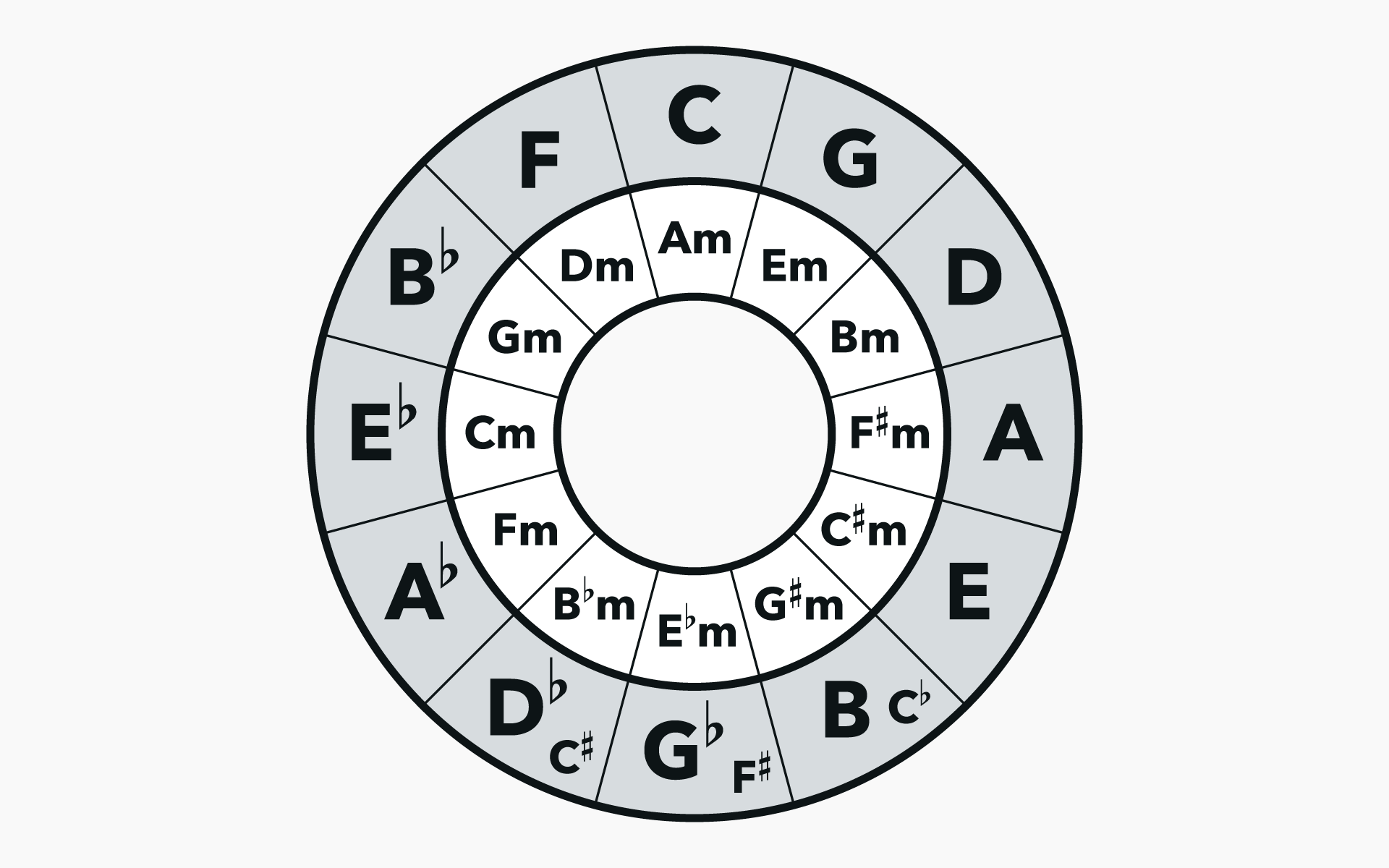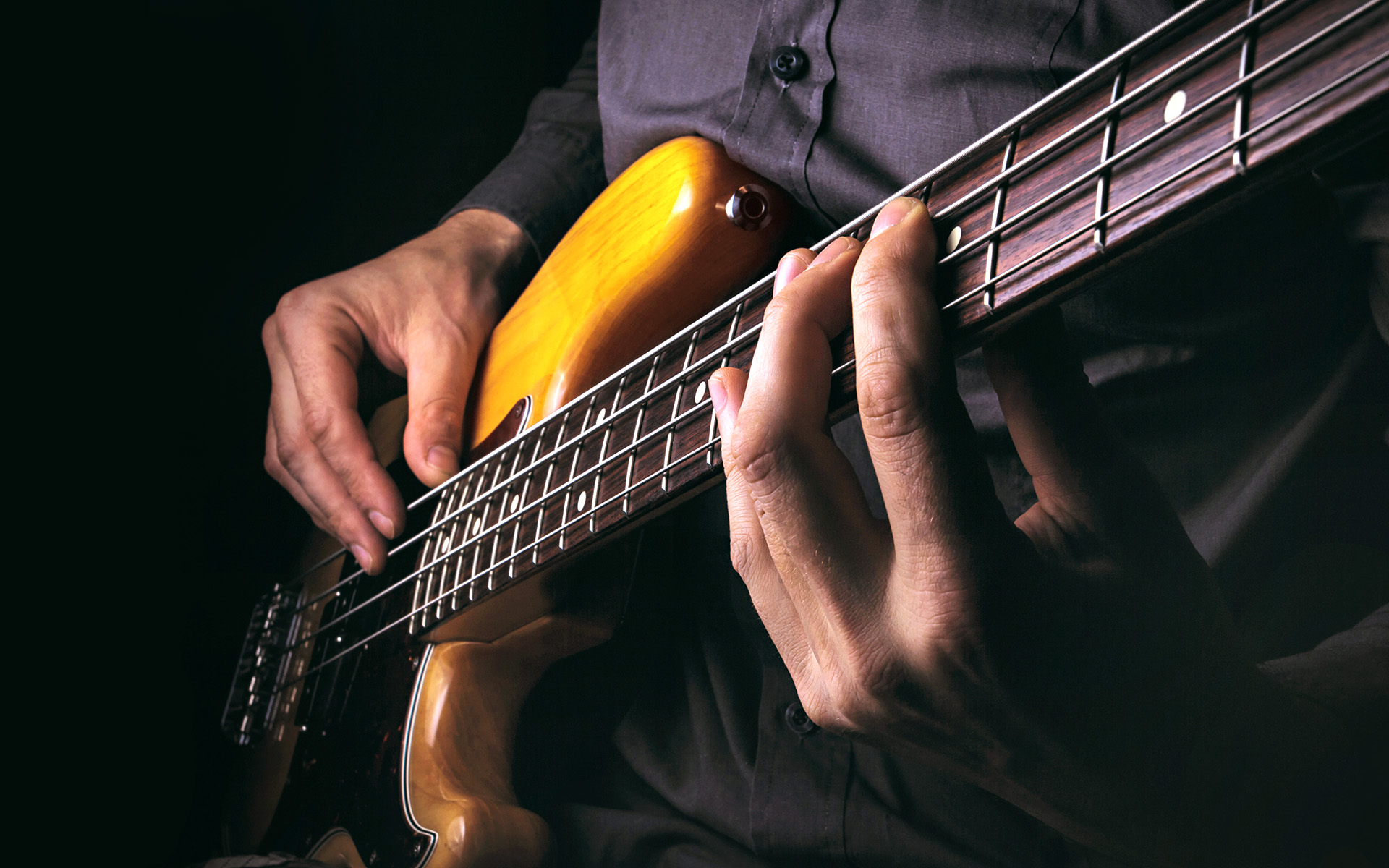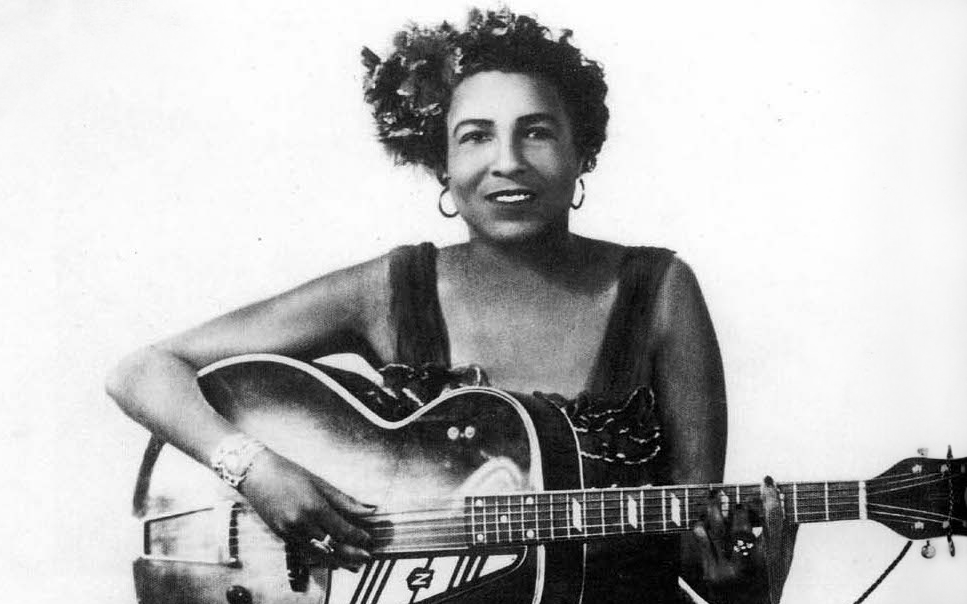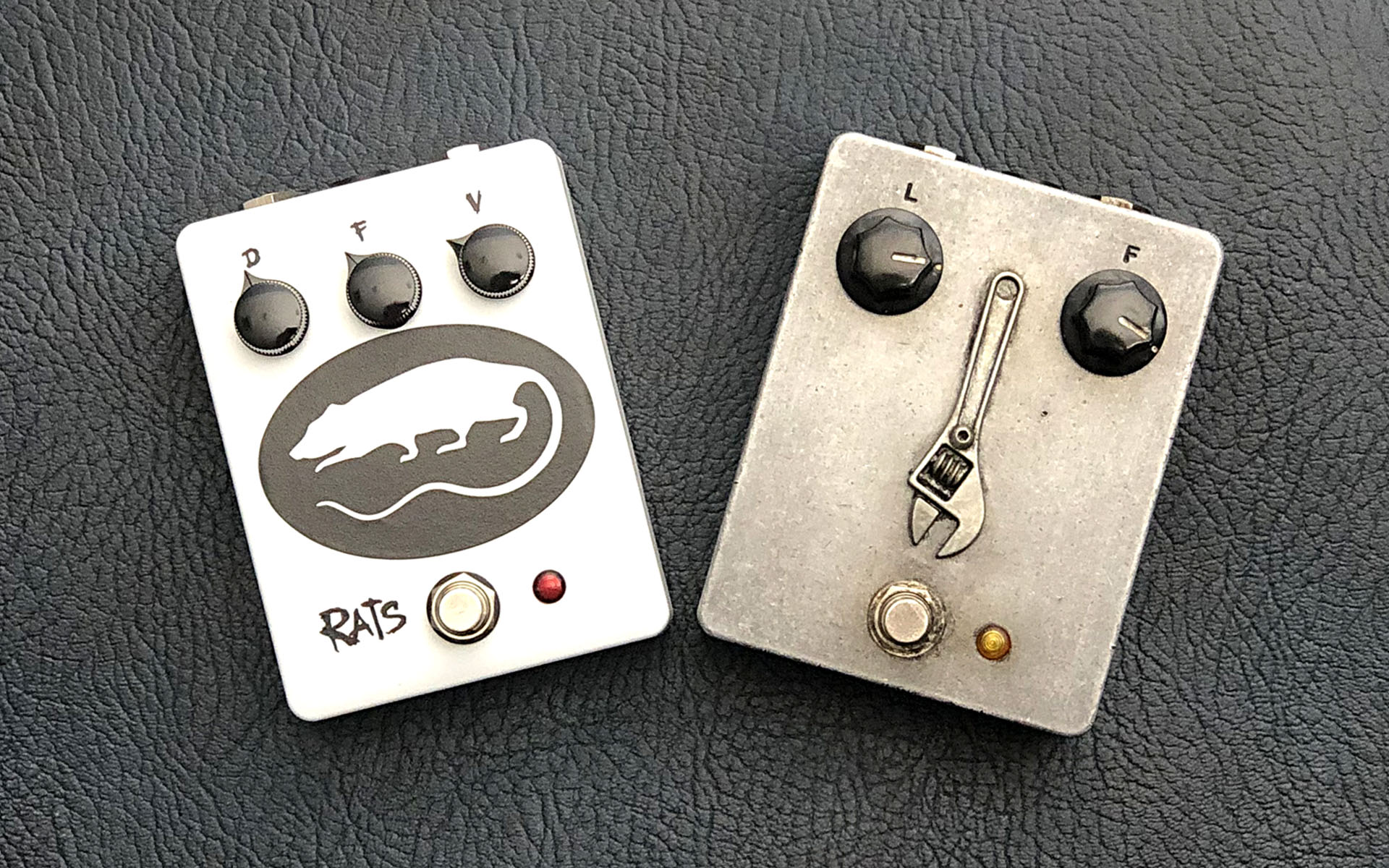Guitarists might read three different types of notation. Each has its strengths.
1. Traditional notation.

Many teachers consider it essential for guitarists to read traditional notation. In part, the reason is for better communication with other musicians. Strings are generally indicated as circled numerals, with 6 being the low E string and 1 being the high E string. Numerals that are not circled are plucking fingers, with 1 being the index finger, 2 the middle finger, 3 the ring finger, and 4 the pinkie. You sometimes see T for the thumb.
Usually, you only see fingerings in pedagogical materials, unless a specific string or finger color is desired. Set strings above the staff to the left of the notes. Set fingerings near the note heads, either to the left or centered against the note. Make sure fingerings are in a different font than measure numbers, to avoid confusion.

2. Tablature.
Tablature is an ancient notation system that dates to the Renaissance, and variations exist for lute, bass guitar, banjo, and other similar instruments. On guitar tab, there are six lines, each corresponding to a guitar string, with the high line being the high E string, and the low line being the low E string—the same orientation as if the guitarist was looking at his or her guitar while playing it, tilting it to see the front. Numerals indicate frets, with 0 indicating an open string.
It’s a help to non-guitarists to know that each fret of a guitar is a half step, getting higher as the vibrating part of the string gets smaller. So, a 3 on the fifth string (A string) would be the note C, which is three half steps up from A. Tab doesn’t usually have rhythms, which is a shock to musicians new to tab, and it sent my old high-school band director into conniptions. But if you know the music by ear, it is a handy way to figure out how to play music. Tab is considered redundant with fingering numbers on traditional notation.

If the strings are tuned to notes besides the standard EADGBE, those notes will be indicated along the left. For example, here is our excerpt with the strings tuned to DADGAD.
There are variations of tablature, including some that have rhythm stems coming out of the numbers, some that dispense with the lines and just have numbers, and others. The version shown is generally preferred for pedagogical materials.
Many teachers have a bias against tab, and for this reason, publishers such as Berklee Press will accompany tab with traditional notation. But particularly beginning guitarists love it, and it serves as a useful entry tool into playing the instrument.

3. Fretboard diagrams.
Fretboard diagrams indicate chord shapes and voicings; on guitar, unlike piano, the same chord can be played in various incarnations, using various strings. These diagrams are like tablature rotated 90 degrees, or looking at your guitar’s face with the head pointed upward. Horizontal lines indicate frets, solid dots indicate which fret is pressed to make the note, and open dots above the string indicate open strings. The leftmost line indicates the low E string, the rightmost line indicates the high E string.
A numeral followed by “fr.” (e.g., 3fr.) to the right indicates what fret the shape begins on. An x above a string means that the string is muted so that it doesn’t sound. Numbers under the strings indicate what fingers should hold each fret, and are relatively rare. Like a chord symbol or key signature, a fretboard diagram stays in affect until the next one appears. Like tablature, it doesn’t imply rhythm.
Below is a version with a different voicing. The above diagram was at the first fret, so no fret numeral was indicated, and the top line was thick. Below, we’re using a different C chord voicing (different than the other notation!), starting on the 3rd fret. The slur means that one finger is holding down multiple strings (called a “bar” or “barre” chord fingering). The numerals at the bottom aren’t included here, which is really more common.
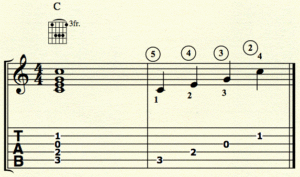
One more tip for non-guitarists. Guitar-specific notation and pedagogy is generally oriented towards right-handed guitarists, but some left-handed guitarists will hold their guitar so that their right hand works the fingerboard as their left hand plucks. For that reason, some will speak of a “strumming” or “plucking” hand vs. a “fingerboard” or “fretboard” hand, rather than “right” or “left.”
By the way, a “fretboard” is a “fingerboard” with marked frets. Orchestral strings (e.g., violin) and fretless basses have fingerboards, not fretboards, as they don’t have marked frets. Guitarists particularly might use the words fretboard or fingerboard interchangeably. More specifically, a position is a general hand location located near a fret, but the fingers might stretch beyond it to grab a note outside of it.
If you’re not a guitarist, just use traditional notation. While computer software can instantly generate tab and fretboard diagrams, the default notation choices often don’t make sense to real guitarists. Only attempt the more specialized notation if you really know what you’re doing or are closely supervised!
STUDY GUITAR ONLINE WITH BERKLEE


